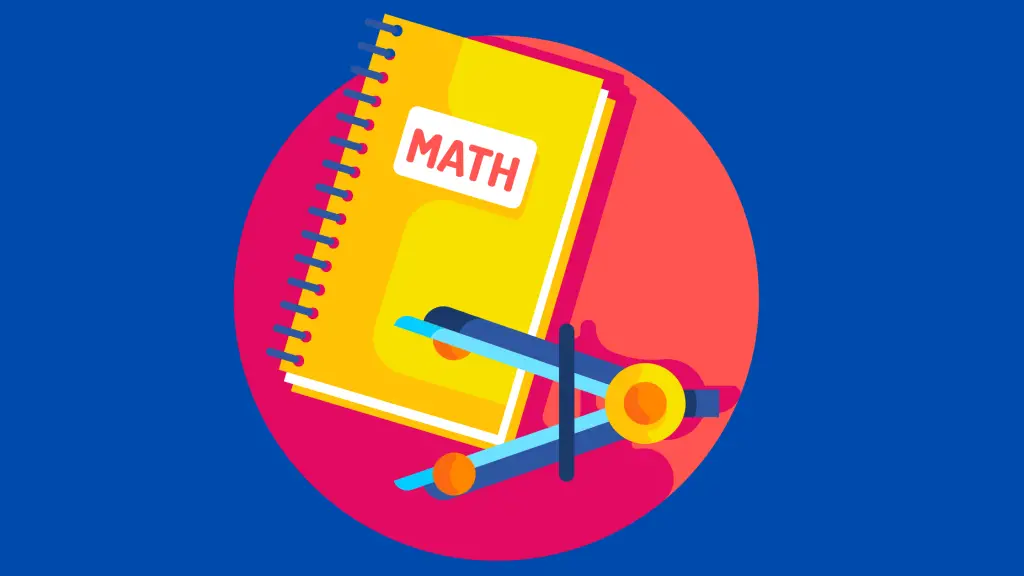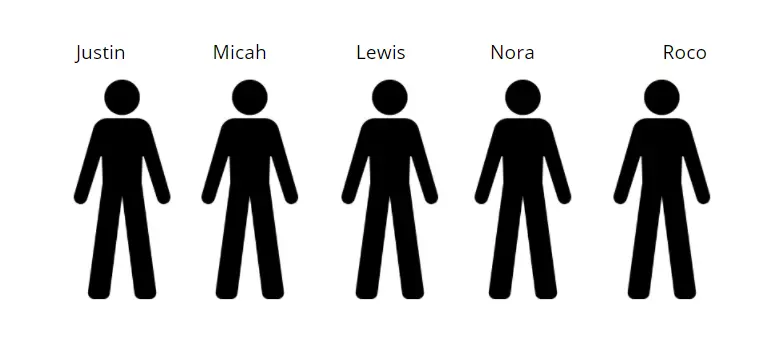NAPOLCOM Exam Reviewer

Aside from the honor of upholding the country’s peace and order, being part of the Philippine National Police (PNP) is one of the most lucrative government jobs. For these reasons, many Filipinos dream of becoming a policeman/policewoman.
To ensure that our future set of police officers is competent and qualified enough to perform their duties, they initially go through an intensive assessment called the NAPOLCOM Entrance Exam.
If you’re one of these Filipinos preparing for the PNP entrance exam, you’re in the right place! This ultimate NAPOLCOM Exam Reviewer aims to increase your odds of passing the exam and becoming part of our country’s police force.
Table of Contents
What Is the NAPOLCOM or PNP Entrance Exam?
The NAPOLCOM or PNP Entrance Exam is a three-hour-long multiple-choice exam administered to those who want to serve in the Philippine National Police (PNP).
The NAPOLCOM Entrance Examination is administered in two modes:
- Traditionally (pen and paper exams) in NAPOLCOM regional exam centers1; or
- Digitally through the NAPOLCOM Computer-Assisted Examination (CAEx) in the NAPOLCOM Central Office in Quezon City2.
Individuals 30 years old and below with a bachelor’s degree are eligible to take the NAPOLCOM Entrance Exam. Only a bachelor’s degree is required for patrolmen/patrolwomen who are temporarily appointed. All examinees are required to pay an exam fee of PHP 400.
The passing score for this assessment is 70%. However, this is still subject to computation and criteria set by NAPOLCOM annually.
How To Use This NAPOLCOM or PNP Entrance Exam Reviewer
This reviewer consists of four parts:
- General Information
- Verbal Reasoning
- Quantitative Reasoning
- Logical Reasoning
Each part corresponds to the actual subtest of the NAPOLCOM Entrance Exam and consists of topic discussions, topic summaries, and visual aids. You can also gauge your understanding using our practice questions accompanied by their answer keys.
Join Our Newly Launched Facebook Group
Preparing for the next scheduled PNP Entrance Exam? Join our Facebook group for the latest updates, free learning materials, and exclusive content.
1. General Information

This subtest assesses your knowledge of our country’s political and legal structure, history, criminal justice system, and social responsibilities.
General Information Modules and Readings + Printable Quizzes
- Philippine Constitution
- Philippine Law and History
- Criminal Justice System
- Current Events
- Social Awareness
- Values/Uprightness
General Information Review Tips and Tricks
- Be updated with the current events in the Philippines and abroad. Read news from reliable sources and consider how these issues affect our society.
- Don’t forget to read the PNP’s history and the meaning of the PNP seal and badge. Recall also the current and previous PNP chiefs.
- Familiarize yourself with the internal system of the PNP (e.g., the age requirement for PO1, qualifications for optional retirement, etc.).
- Do not memorize the entire Philippine constitution. Just focus on the parts that laid our political and legal system, specifically Articles I (National Territory) to VII (Executive Department). However, make sure you also review the summary of the remaining articles and any newly signed laws, if there are any.
- Aside from the Spanish to Japanese occupation era, history-related questions cover relatively more recent topics such as Martial Law and EDSA I and II.
- We also recommend reading the following relevant laws that might appear in the test:
- RA 6713 (Code of Conduct and Ethical Standards for Public Officials and Employees)
- RA 10158 (Revised Penal Code)
- RA 6975 (PNP Reform and Reorganization Act of 1998)
- RA 9995 (Anti-Photo and Video Voyeurism Act of 2009)
- RA 10589 (Anti-Corruption Month)
- RA 9147 (Wildlife Resources Conservation and Protection Act)
2. Verbal Reasoning

This part evaluates your proficiency in writing and reading using the English language.
Verbal Reasoning Modules and Readings + Printable Quizzes
- Vocabulary
- Grammar
- Reading Comprehension
Verbal Reasoning Review Tips and Tricks
- Learn new words every day to increase your vocabulary. You can start by referring to this list of words usually asked in vocabulary tests. Spend more time reading books and consult a dictionary to find its meaning as you encounter a new word.
- Proficiency in English grammar takes practice. So, take as many mock exams as possible to gain familiarity with standard grammar rules such as subject-verb agreement, pronoun-antecedent, order of adjectives, parallelism, etc.
- For reading comprehension, try to read the questions before the given text. Many previous examinees mentioned how long and eye-straining the given texts can be. So, this technique will save time and mental energy since you can skim the given text and look for the answer.
3. Quantitative Reasoning

This portion assesses your current understanding of basic mathematical concepts and your ability to apply them when solving word problems.
NAPOLCOM Exam Math Modules and Readings + Printable Quizzes
a. Arithmetic and Number Sense
- Real Numbers and Imaginary Numbers
- Operations on Integers
- Order of Operations (PEMDAS)
- Factors and Multiples
- Divisibility Rules
- Fractions and Decimals
- Operations on Fractions and Decimals
- Percent
- Ratio and Proportion
b. Algebra
- Algebraic Expressions
- Laws of Exponents
- Polynomials
- Special Products and Factoring
- Linear Equations
- Quadratic Equations
- Rational Expressions
- Inequalities
- Using Algebra to Solve Word Problems
c. Geometry
- Introduction to Geometry: Undefined Terms, Definitions, Postulates, and Theorems
- Angles: Classification and Properties
- Converting Units of Measurements
- Perimeter and Area of Plane Figures
- Volume of Solid Figures
d. Statistics
NAPOLCOM Exam Math Printable Summary/Review Notes (Av ailable Now!)
NAPOLCOM Exam Math Printable Flashcards (Av ailable Now!)
NAPOLCOM Exam Math Review Tips and Tricks
- Strengthen your knowledge of basic mathematical concepts like basic arithmetic with real numbers, PEMDAS, writing algebraic expressions, and solving equations. Memorize essential formulas but remember how to use them and what each variable represents.
- Take as many practice tests as possible. This allows you to encounter a variety of problem-solving questions. Although these problems differ in form and given values, you’ll eventually notice a pattern on how to solve them, helping you come up with a solution for even the most challenging questions.
- Identify which lessons you struggle with the most. Some examinees ignore their weaknesses and focus only on what they do best. However, addressing the challenging problems head-on will give you the confidence to perform better in this subtest.
- Learn quick computing methods to maximize your time in this portion. Here are some techniques you can use:
- When getting the 25% of a number, divide the number by 4. For 50%, divide it by 2.
- Multiplying a decimal by 100 means you only have to move two decimal places to the right. For instance, 9.25 x 100 = 925. Multiplying by 1000 means moving three decimal places to the right.
- Dividing a decimal by 100 means you only have to move two decimal places to the left (e.g., 817.2 ÷ 100 = 8.172). Dividing by 1000 means moving three decimal places to the left.
- Remember the square of the first 100 counting numbers (i.e., 12 = 1, 22 = 4, 32 = 9, …, 102 = 100).
NAPOLCOM Math Practice Tests (Free PDF Downloads)
- Quantitative Reasoning Practice Test (Set 1): Questions | Answers
- Quantitative Reasoning Practice Test (Set 2): Questions | Answers
- Quantitative Reasoning Practice Test (Set 3): Questions | Answers
NAPOLCOM Math Printable Mock Exam + Answer Key (Av ailable Now!)
4. Logical Reasoning

This portion includes word analogies and the classic abstract reasoning questions (shape patterns). Moreover, there are questions dedicated to “mapping” or analyzing a given map to answer a given problem.
Logical Reasoning Modules and Readings + Printable Quizzes
- Word Analogies
- Number Series
- Spatial Reasoning (Map Reading)
Logical Reasoning Review Tips and Tricks
1. Study the following to help you answer mapping-related questions:
- Cardinal directions (North, East, West, South)
- Secondary directions (Northeast, Southeast, Northwest, Southwest)
- Basic signages and signs
- Corner, intersection, and cross-streets in a map
- “Respond Emergency Vehicles” include police mobiles, fire trucks, and ambulances.
2. Learn how to illustrate given logical problems to make it easier to understand the given situation.
Example: Lewis is behind Nora, Micah is in front of Justin, Roco is in front of Nora, and Micah is behind Lewis. Who is the fourth person in the line?
To illustrate:

We can see that the fourth person is Micah
3. Read the questions carefully. Some questions can be answered quickly if you understand the given situation.
Example: A plane crashed near a national cemetery. Is it right to bury the survivor from a foreign country in the national cemetery where the plane crashed?
If you quickly understand that the person is a survivor, you can immediately tell that it is improper to bury a living person anywhere.
General Tips To Pass the NAPOLCOM Entrance Exam
- Previous examinees suggest starting reviewing 1-2 months before the examination date. This allows you to absorb as much information as possible since the test coverage is wide.
- One effective way to retain what you’re learning is to teach it. Find someone (i.e., a friend, sibling, classmate, etc.) willing to listen to you and share with them what you’ve learned. If you’re struggling to explain the concepts, it means you still have more learning to do.
- Write while reviewing. Taking notes while studying3 retains the information more in memory since it organizes your thoughts.
- Since this is a multiple-choice type of exam, remember these test-taking strategies that can help you:
- If you’re uncertain which of the given options is the correct answer, eliminate those that you think are impossible to be the correct one. This narrows your options and increases your chance of getting the correct answer.
- After reading the question, have an answer in mind immediately. This keeps you from being confused by the wrong options and helps you focus only on the correct one.
Frequently Asked Questions
1. Is the NAPOLCOM or PNP entrance exam hard?
According to previous examinees, the NAPOLCOM exam is slightly easier than the Civil Service Exam. However, it is still challenging because of its broad coverage.
2. How many questions are there in the PNP entrance exam?
Based on the previous exams, the NAPOLCOM exam contains 150 questions.
3. Can I join the PNP without taking the NAPOLCOM or PNP Entrance Exam?
Yes. There are two ways to join the PNP: the first is by graduating from the PNP Academy, while the second is through the NAPOLCOM Entrance Exam.
4. What is the next step after passing the NAPOLCOM/PNP entrance exam?
After passing the exam, you will get a certificate of eligibility proving you are qualified to be a PNP patrolman/patrolwoman. Use this as part of your documentary requirements when applying at a PNP branch.
Leave Us a Comment or Review!
This reviewer is a work in progress. We aim to provide the best online NAPOLCOM Exam Reviewer for self-directed learners. And no one can provide better feedback than those who have personally used this reviewer like you.
If you have comments, suggestions, corrections, or feedback, please use the comment section below or email admin at filipiknow dot net. Don’t forget to join our Facebook group for exclusive updates, learning materials, and other content.
References
- (2022). (Version NAPOLCOM.gov.ph). PNP Entrance Examination Announcement. Quezon City: National Police Commission (NAPOLCOM). Retrieved from https://napolcom.gov.ph/pdf/examEapril22.pdf
- (2022). (Version NAPOLCOM.gov.ph). NAPOLCOM Computer-Assisted Examination (CAEx) Announcement. Quezon City: National Police Commission (NAPOLCOM). Retrieved from https://napolcom.gov.ph/pdf/CAEXmarch22.pdf
- Benefits of Notetaking? (n.d.). Retrieved from https://sites.austincc.edu/student-skills-workshops/taking-effective-notes/benefits-of-notetaking/
Copyright Notice
All materials contained on this site are protected by the Republic of the Philippines copyright law and may not be reproduced, distributed, transmitted, displayed, published, or broadcast without the prior written permission of filipiknow.net or in the case of third party materials, the owner of that content. You may not alter or remove any trademark, copyright, or other notice from copies of the content. Be warned that we have already reported and helped terminate several websites and YouTube channels for blatantly stealing our content. If you wish to use filipiknow.net content for commercial purposes, such as for content syndication, etc., please contact us at legal(at)filipiknow(dot)net
